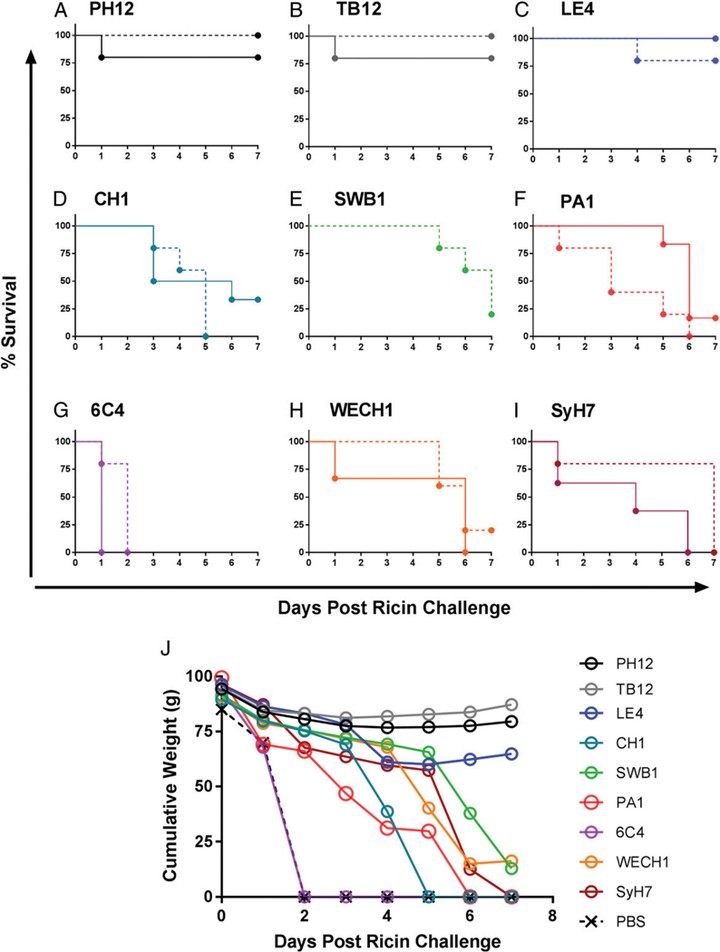Fine-Specificity Epitope Analysis Identifies Contact Points on Ricin Toxin Recognized by Protective Monoclonal Antibodies

Abstract
Ricin is a fast-acting protein toxin classified by the Centers for Disease Control and Prevention as a biothreat agent. In this report, we describe five new mouse mAbs directed against an immunodominant region, so-called epitope cluster II, on the surface of ricin’s ribosome-inactivating enzymatic subunit A (RTA). The five mAbs were tested alongside four previously described cluster II—specific mAbs for their capacity to passively protect mice against 10× LD50 ricin challenge by injection. Only three of the mAbs (LE4, PH12, and TB12) afforded protection over the 7-d study period. Neither binding affinity nor in vitro toxin-neutralizing activity could fully account for LE4, PH12, and TB12’s potent in vivo activity relative to the other six mAbs. However, epitope mapping studies by hydrogen exchange-mass spectrometry revealed that LE4, PH12, and TB12 shared common contact points on RTA corresponding to RTA α-helices D and E and β-strands d and e located on the back side of RTA relative to the active site. The other six mAbs recognized overlapping epitopes on RTA, but none shared the same hydrogen exchange-mass spectrometry profile as LE4, PH12, and TB12. A high-density competition ELISA with a panel of ricin-specific, single-domain camelid Abs indicated that even though LE4, PH12, and TB12 make contact with similar secondary motifs, they likely approach RTA from different angles. These results underscore how subtle differences in epitope specificity can significantly impact Ab functionality in vivo.